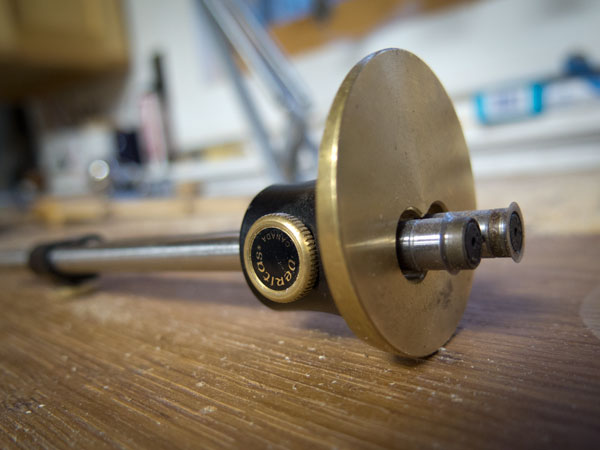We may receive a commission when you use our affiliate links. However, this does not impact our recommendations.
Like last year, I am ending this gift guide with a tool that is a little expensive but will change your work to the core. (Last year is was an EasyWood Full-Size Rougher turning tool.) This year it is the best mortising gauge ever made: the Veritas Dual Marking Gauge.
Anyone who has worked with me knows that I am crazy in love with the Tite-Mark marking gauge, which is a tool I simply cannot imagine living without. I own four. And I hope to own more.
But for mortising, the Veritas Dual Marking Gauge is the cow’s meow. Like the Tite-Mark, it is so simple and ingenious that it’s a wonder no one has ever made one like it before.
What’s so amazing? The “optional” Shaft Clamp. It’s not optional. You need it. This allows you use your actual mortising chisel (metric or otherwise) to set the blades of the gauge. Then you can change the position of those lines by moving the head of the gauge. Pure genius.
Other gauges have a pale imitation of this function. But none does it as well as the Veritas.
Other details: The shafts are not in the center of the head, which means the tool will never roll off the bench. The tool is perfectly balanced and nests in your hand. It is (with the Shaft Clamp) only $65 but worth much more. Get one.
— Christopher Schwarz
P.S. All of the gift guide entries (including last year’s) are here.
Here are some supplies and tools we find essential in our everyday work around the shop. We may receive a commission from sales referred by our links; however, we have carefully selected these products for their usefulness and quality.











Nice gauge.
I happened to spot something rather similar on Jim Bode’s site.
A Stanley 198 circa 1920.
Best wishes,
David
Hello Everyone! I have been keeping an eye on this gauge. It is about time I get it. BTW allow me to introduce myself. My name is Tariq and I am new here and I would like to thank popular wood working for accepting me. I was a electrician and a carpenter but now I am a teacher and I only do carpentry as a hobby. As for anything electrical, well I won’t do it unless it is absolutely necessary. I have some questions about tools and carpentry but I think I will hold off on asking them until I see an article related to my questions. I hope everyone welcomes me with a warm welcoming. Thanks and I hope to read and learn more from these blogs.
I was going to take mild umbrage with this suggestion that one purchase a Mortising Gauge, but it is the holiday season so we’re entitles to a bit of pampering, and reviewing the text you did say that folks should try them out, and get one if they like it.
<blockquote cite="Do You Need a Mortise Gauge?
Many tool inventories list a mortise gauge, which is a gauge with two pins
so that you can mark out both walls of a mortise or both cheeks of a tenon
simultaneously. I have one, but I don’t use it as much as I thought I would.
When I mark out mortises, I use a simple cutting gauge and define only one
wall of the mortise. The mortise chisel itself defines the other wall of the
mortise. (Schwarz 120)"
Schwarz, Christopher. The Anarhist’s Tool Chest. Fort Mitchell: Lost Art Press LLC, 2010.
That’s right: I’m hanging on every word, Chris.
My question is how you end this 12 days of Christmas in 8!
We NEED more tools – to have less tools…
I ordered one of these at the 2013 Handworks event after trying it out. I have been using it for about a year and a half and I totally agree with everything Chris says about it. Well worth the money.
But what do you do with the shaft clamp when not mortising? For me, it becomes a fiddly loose bit that is hard to keep track of. In typing this I think an o-ring on the end of one/both of the shafts could solve this issue.